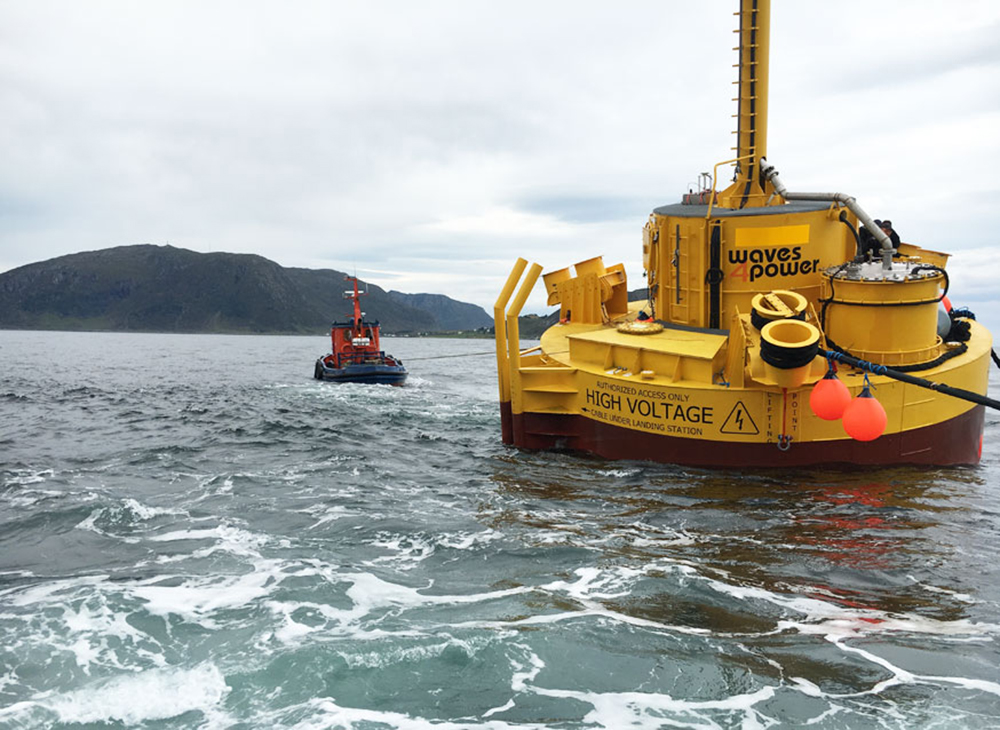Apart from geothermal energy, another renewable resource for the production of electricity is coming from wave energy. From the name itself, wave energy or ocean wave energy is a renewable and clean source of electricity with great potential for worldwide demands of electricity production. About 40% of power demand in the entire world could be supplied by this resource, which is equivalent to 700 nuclear plants combined.Â
The demand for energy from ocean waves started way back in the year 1799. This is when Girard filed a trademark for wave energy utilization in Paris. Later in 1940, the advanced pursuit of such energy source went all the way to Japan when Yoshio Masuda, a former naval commander, developed the wave energy source. He was then referred to as the father of advanced technology for wave energy.Â
So, as you read further, you’ll know more about wave energy and how its conversion to electricity.Â
Wave Energy: What is it?
Ocean wave energy or commonly known as wave energy is another ocean-based type source of renewable energy. It uses ocean wave power to produce electricity. Compared to tidal energy (uses the flow of tides), the wave energy utilizes the surface water in a vertical movement that creates tidal waves.Â
The wave energy will then convert the periodic movement of ocean waves and turn it into electricity. This is done by placing a device on the ocean’s surface that gets the wave energy produced by the ocean. After, it will then converts to electrical energy.Â
Conversion of Wave Energy into Electricity
For experts to control wave energy and have it produce a power output, they need to follow the direction or the movement of the waves. Profitable and successful utilization of wave energy occurs in some parts of the world only. These places include Australia, North America, Scotland, and some states of America.Â
Essentially, wave energy is a condensed type of solar power that is generated by the action of the wind moving across the surface of the ocean. This will then be used as a potential source of energy. The intense rays of the sun will have different effects in different corners of the world upon hitting the atmosphere. This causes the atmospheric air temperature to move from hotter to colder regions of the world, thus the wind rises.        Â

Image source: https://openei.org/wiki/Wave_EnergyÂ
A part of kinetic energy from the air’s movement is transferred to the water underneath, hence resulting in ocean waves. The ocean may deem to be an enormous storehouse collector of energy conveyed by the rays of the sun to the ocean. The waves will transport the transmitted kinetic energy traversing the surface of the ocean. From that process alone, we can safely say that ocean waves are an energy form.Â
In addition, these waves will travel all throughout the vast ocean area without having any energy loss. But, the moment the waves reach the coastline, the speed may decrease, whilst the size will relatively increase. The ocean waves will strike the coastline, clearing large kinetic energy quantities.Â
Equipment for Wave EnergyÂ
There are surely a lot of advantages when using ocean wave power than ocean wind power. Ocean energy, of course, is more certain, with minimal variable, and provides higher energy available. Also, the wave energy can be categorized as either nearshore equipment, shoreline equipment, or offshore equipment, depending on the energy conversion distance. Below are the differences between these three. Â
- Nearshore equipment – Used to extract wave energy directly from the zone breaker including the depths of the water at 20m beyond the zone breaker.
- Offshore equipment – A type of equipment that sets farthest out to the ocean and beyond the breaker zone. It uses the high-power density and greater energy wave available that is found in deep ocean waves. One of the best advantages of this category is that there are zero significant earthworks needed, unlike onshore equipment.
- Shoreline equipment – A category that uses wave energy that is embedded on the coastline. This is both in and out of the ocean waves.Â
Each of the equipment mentioned contains different components to complete the wave capturing process. Some of these essential components are ball valves, cylinders, piping system, etc. Hence, ball valve suppliers are pretty much keen in terms of installing these components to the devices mentioned above.Â
Conclusion
There is truly a fascinating variety of available designs that will surely maximize the energy obtained for electricity production. Since the majority of the energy sourced from water waves are contained near the shoreline or the surface that falls off with great depth. The wave energy machines are of huge help to make the entire operation successful. They have the ability to obtain the kinetic energy from the waves’ movement.Â
Moreover, it is pretty impressive how electricity is generated from water waves apart from other means we know, of course. This will surely give you an idea about different means of electricity production, apart from the ones you already knew, perhaps.
